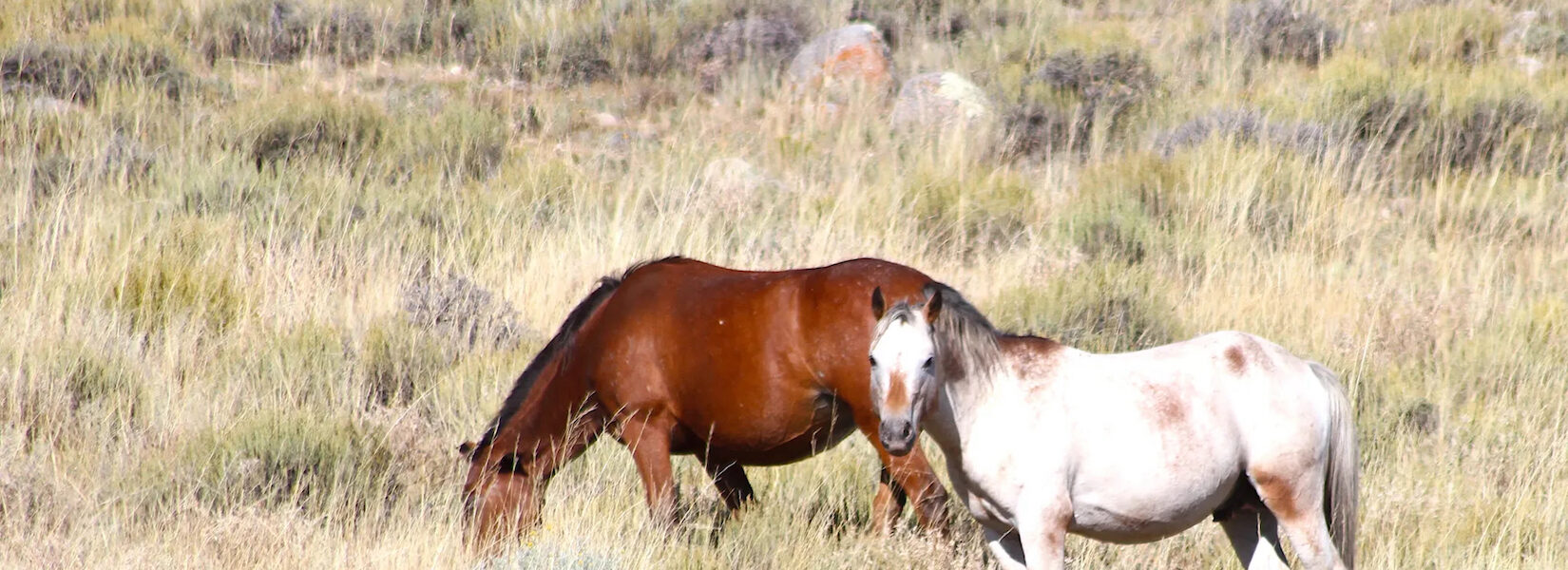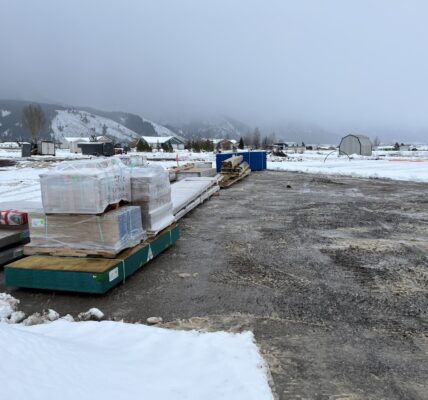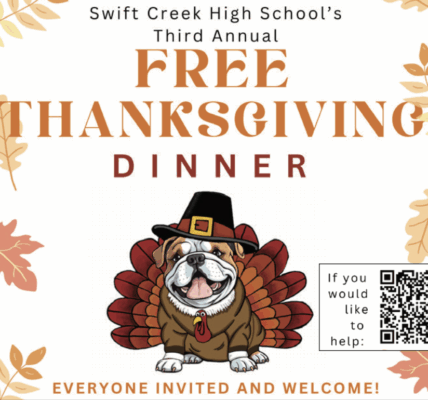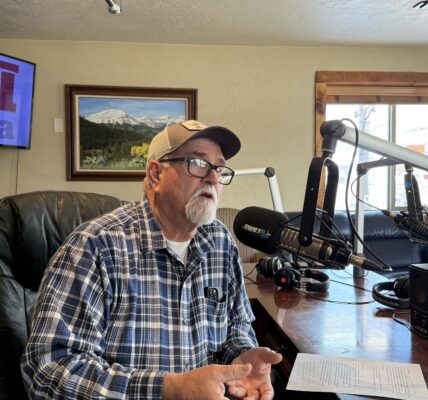Overpopulated wild horses are hurting sage grouse survival rates, Wyoming study finds
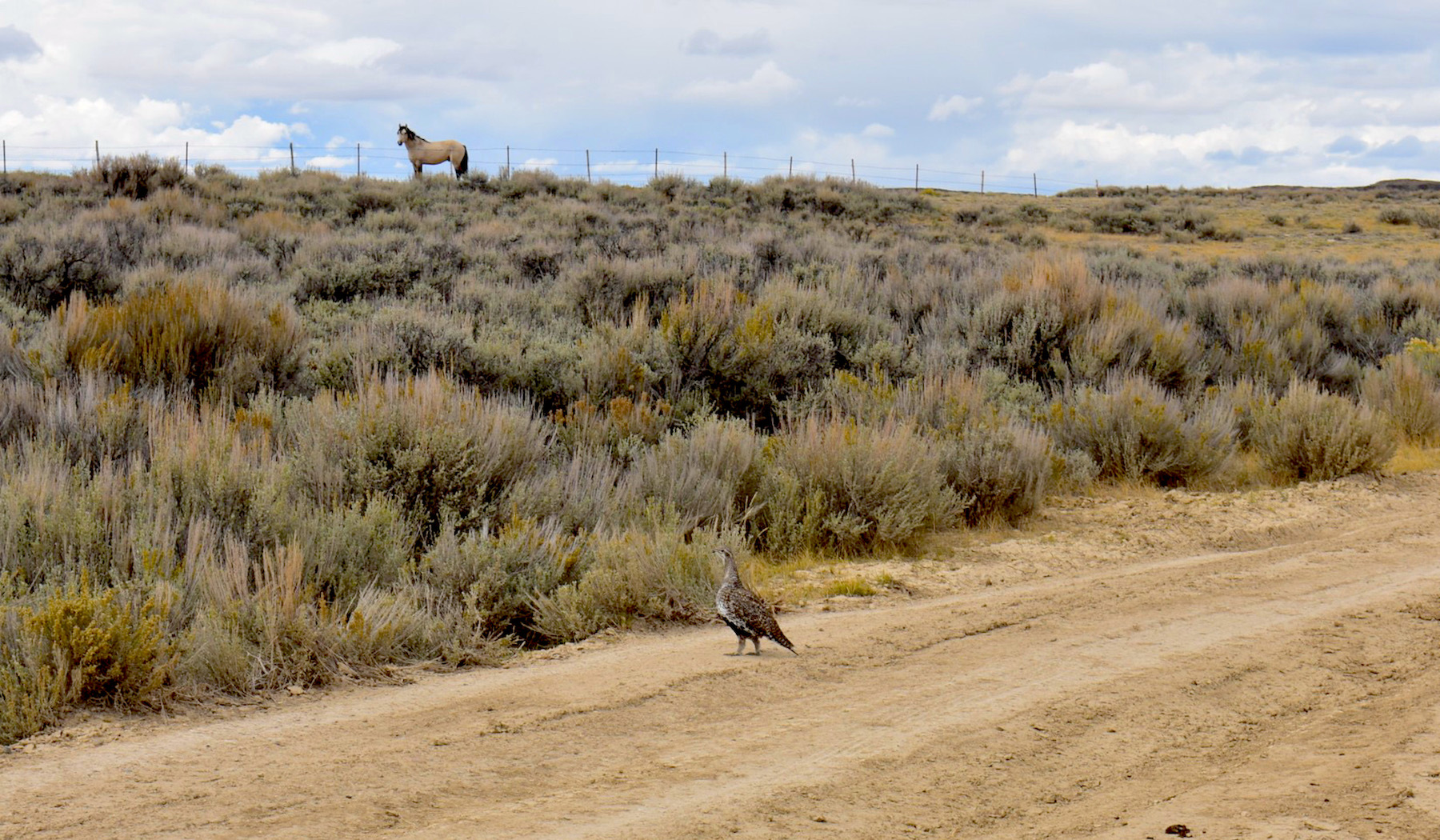
• Research, nearly 15 years in the making, suggests that non-native equines add another stressor to the struggles of sagebrush-dependent birds.
By Mike Koshmrl, WyoFile.com
Newly published research out of the University of Wyoming suggests that sage grouse are suffering from free-roaming horses that have overrun the imperiled sagebrush-steppe habitat the birds depend upon.
Specifically, high densities of horses have a clear effect on the percentage of sage grouse nests successfully hatching, and on young birds surviving to see adulthood.
“Very clearly, our results suggest that if we don’t go over [horse population goals], then sage grouse nesting, brood-rearing and juvenile survival is going to perform much higher,” said Jeff Beck, a University of Wyoming ecologist who led research that was recently published in The Journal of Wildlife Management. “Where horses are sharing habitat with sage grouse, it’s really important to maintain horse numbers that don’t exceed the maximum [population goal].”
Beck’s research involved monitoring nearly 1,000 GPS-equipped sage grouse in southern and central Wyoming, from the Red Desert’s Adobe Town north to Conant Creek. The study team looked at how those birds fared in areas where there were no free-roaming horses at all. They also tracked nest success, as well as brood, juvenile and adult survival where horses dwell. As a barometer of equine density, the study used the Bureau of Land Management’s maximum “appropriate management level” — and how far the number of living, breathing horses departs from that seldom-achieved goal, despite regular roundups.
Results showed clear correlations suggesting that horses are harming sage grouse.
Nest survival decreased 4% for birds that lived among the at-objective herd population. It tumbled another 8% when horse numbers were three times the goal.
Sage grouse chicks were more affected: In areas where free-roaming horse numbers were triple the goal, survival rates were knocked down by 18% during each of two different stages of brood life.
Juvenile sage grouse were likewise impacted. Survival rates of youngsters older than 35 days were reduced by 8% where horses were present at or below population goals. The likelihood of making it to see another day tumbled by 18% when horse abundance reached three times the BLM’s goals.
Adult birds were the outlier. There was no evidence that increased abundance of horses influenced adult survival.
The findings about the harmful effects on younger age classes of grouse weren’t entirely a surprise.
A 2021 study out of Nevada published in the same journal found that for every 50% increase in horse abundance over the population goal, there was a corresponding 2.6% annual decline in sage grouse abundance.
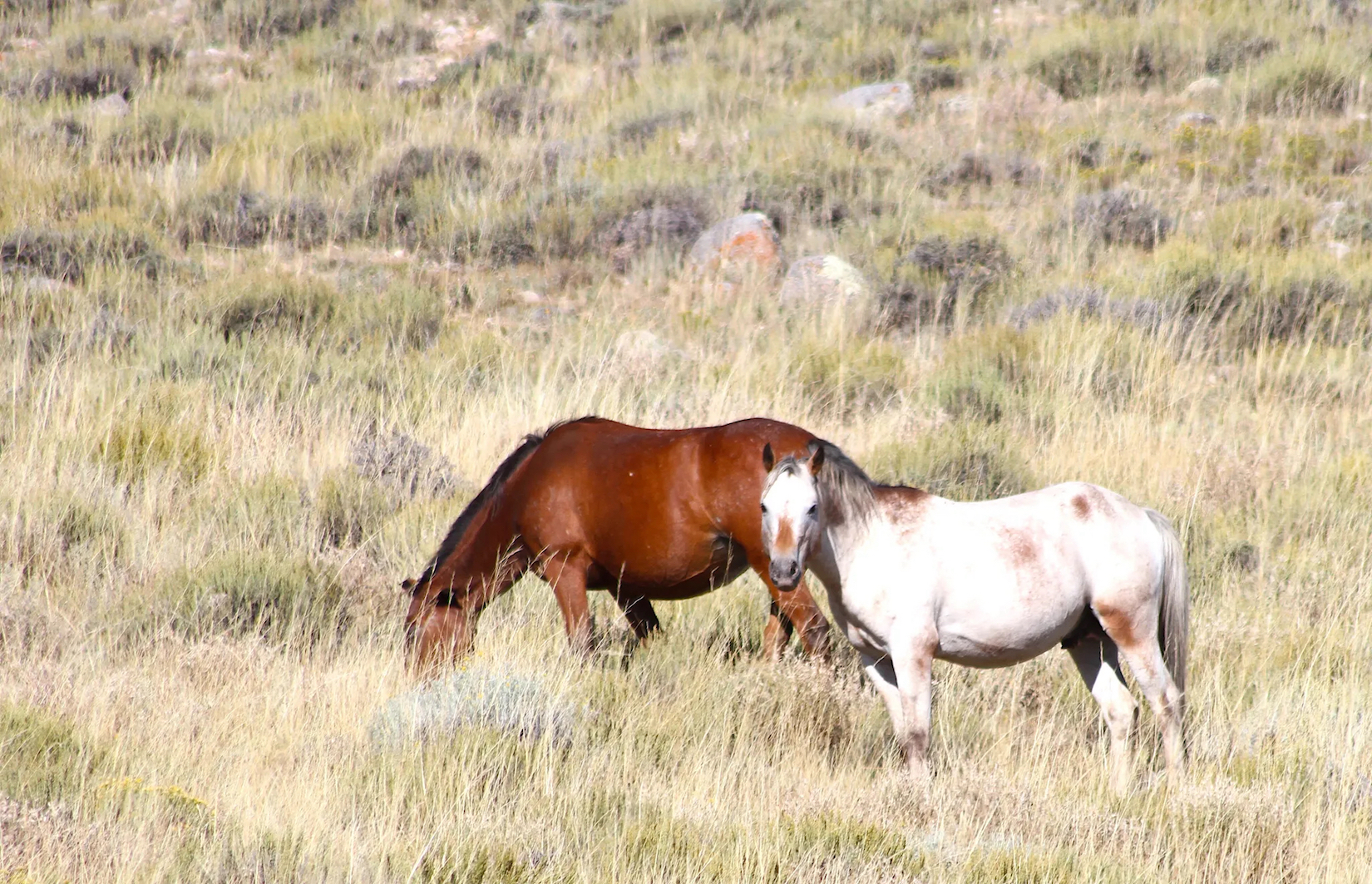
Mechanisms of decline
“That [Nevada study] was just looking at population growth,” said Megan Milligan, a U.S. Geological Survey biologist who partnered with Beck on the recent Wyoming research. “There was no investigation in that research as to specific mechanisms of how free-roaming horses could be affecting grouse.”
The Wyoming research provides a clearer picture of how higher densities of horses are affecting sage grouse — by suppressing survival rates. Some 11% of the Equality State’s sage grouse habitat occurs within BLM herd management areas. And over 80% of the areas have populations exceeding the goal.
Horses can affect sage grouse directly, like, for example, by trampling nests, Beck said. But that’s unlikely to influence the population, he said. It’s more plausible that horses are causing indirect population-level effects by modifying sage grouse habitat.
“They break up sagebrush, they increase bare ground, they have a lot of impact on riparian areas,” Beck said.
With less cover, sage grouse in turn become more vulnerable to predation.
The indirect effects are most acute in the summer, when horses and sage grouse both tend to concentrate near water sources.
What about cattle?
Domestic livestock, too, tend to gather around water sources. But Beck is skeptical that cattle and sheep grazing is influencing sage grouse habitat the way free-roaming horses have within his study area.
“If there’s a problem with livestock, they take them off the range,” Beck said. “Horses are staying there year round, until the next gather.”
Reducing free-roaming horse numbers is divisive, even when herds are overpopulated and being reduced in the direction of federal goals. Roundups are monitored by impassioned wild horse advocates and management decisions are frequently litigated — including in portions of Beck’s study area.
Looking at his results, Beck’s main message to land managers is to strive to keep horse numbers lower than population goals.
“We’re not saying, ‘Get rid of all the horses,’” he said. “Our message is to manage it. If you manage it not to exceed that [goal], then sage grouse that share habitat with horses can continue to do well.”
The U.S. Geological Survey and University of Wyoming are building on the research. Biologists are trying to establish a direct link between what wild horse effects on nests, broods and juveniles means for sage grouse population growth rates, Milligan said. They’re looking elsewhere geographically, too.
“We’re hoping to expand the study outside of Wyoming,” she said, “to see how these relationships vary across sage grouse range.”
WyoFile is an independent nonprofit news organization focused on Wyoming people, places and policy.

